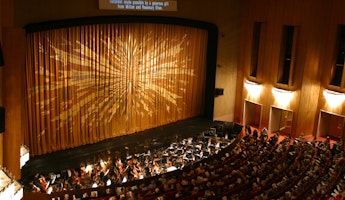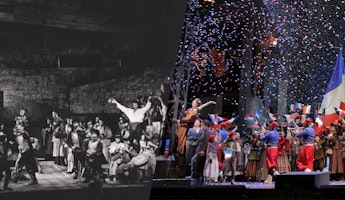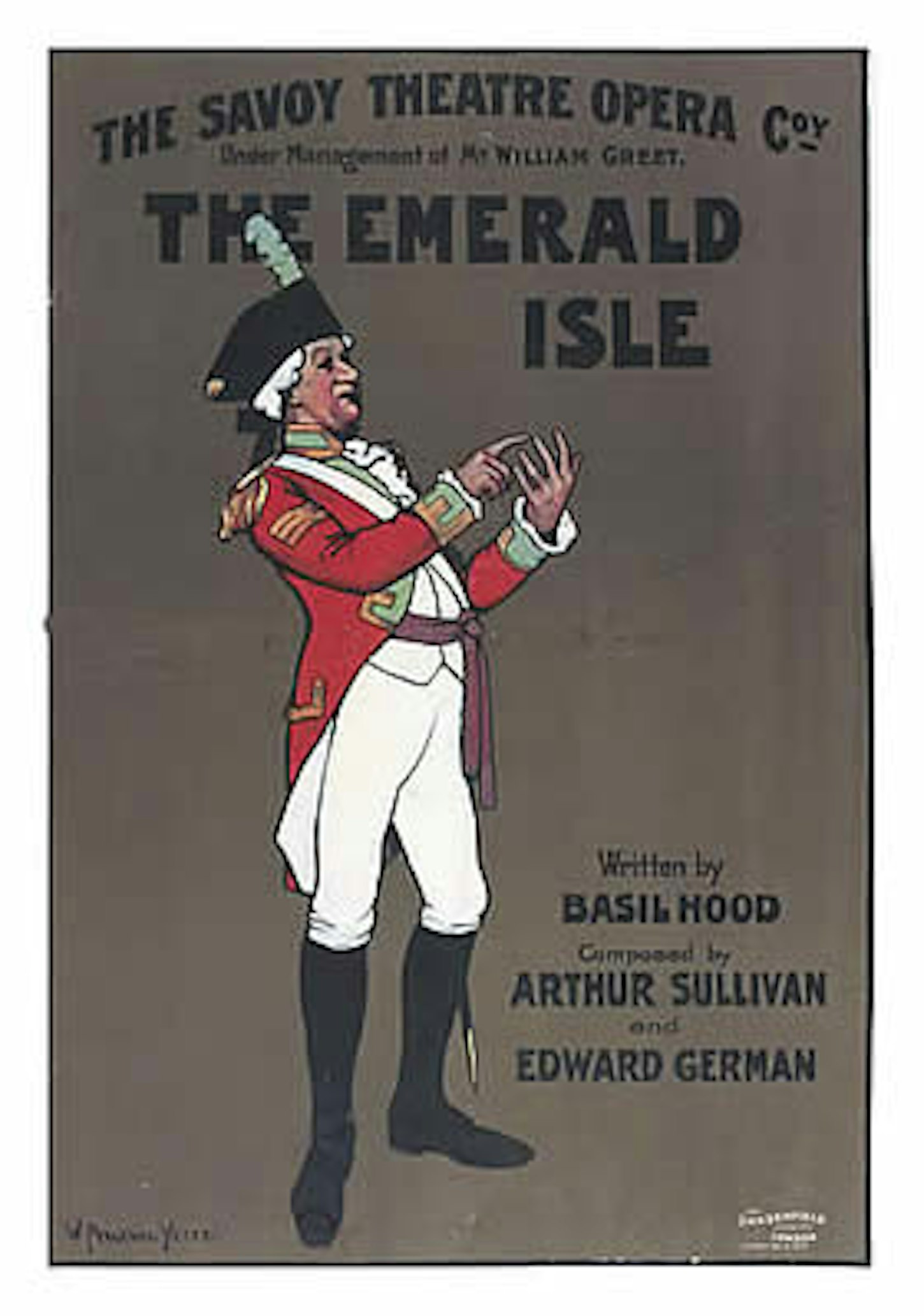Blog
March 7, 2024
Operas That Take Place in Ireland
Ireland is an island that has given us some of the greatest literary figures, with James Joyce, Oscar Wilde, Samuel Beckett and Bram Stoker all hailing from the Emerald Isle. With its wondrous storytellers and a plethora of fascinating creatures in its folklore and a rich history, it feels like a perfect place for an operatic setting but it’s rare to find an opera set in Ireland. Though the number may be rather small, the operas you do find offer insight into Irish culture and music. For this St. Patrick’s Day, let’s look at some Irish-set operas worthy of attention.
The Emerald Isle
No surprise here: Arthur Sullivan’s The Emerald Isle is indeed about Ireland. It premiered in 1901, five years after Sullivan’s famous departure from his longtime collaborator W.S. Gilbert and one year after the death of Sullivan, who passed away in 1900 after writing only two songs for the opera. Edward German completed The Emerald Isle, basing his work on the musical sketches Sullivan had left behind and composing some entirely new music as well. While it couldn't possibly reach the popularity of Gilbert and Sullivan’s classics like H.M.S Pinafore or and The Pirates of Penzance, it’s still a piece worth hearing, considering that it features the final compositions from a musical icon.
The result isn’t what you expect of a Sullivan opera. Although it’s a comedy, the opera addresses the serious issue of cultural erasure in Ireland. The story follows an Irish patriot who is resisting the oppressive re-education program of the English. An English professor of elocution, hired to aid the re-education program, joins the side of the Irish. While the professor’s romantic complications come in between his relationship with the Irish, he ultimately is able to find a solution that appeals to both Ireland and England, giving the opera a happy ending and portraying Irish culture is a positive and endearing light.
Adelson e Salvini
The first opera by Italian composer Vincenzo Bellini, Adelson e Salvini was composed in 1825 but didn't have a professional production until 1985, when it was performed at the Teatro Metropolitan in Catania, Italy. Bellini wrote the opera to be performed by students at his alma mater, the San Sebastiano Conservatory in Naples, where he was a young teacher, and it proved so popular that it was performed there every Sunday for a year. Hoping to see his opera on professional stages, Bellini revised the piece several times, resulting in two different endings. While that never happened during his lifetime, the opera did catch the eye of an impresario who gave him a commission that would officially launch his operatic career.
Set in 17th century Ireland, the story follows an Italian painter named Salvini who falls in love with Nelly, the girlfriend of his friend Adelson, an Irish lord. Salvini’s turmoil leads to him attempting to take his life. Adelson stops him from doing so, which leads Salvini to mistakenly believe that Adelson is giving him Nelly’s hand. Salvini also gets wrapped up in a criminal plot which leads to him believing Nelly has been killed. In both endings of the story, it is revealed that Nelly is unharmed. One ending sees Salvini watch as Adelson and Nelly get married, while the other sees him come to his senses, get over his love for Nelly, and marry a young Irish woman he had given painting lessons to, named Fanny.
Eithne
Composed by Robert O’Dwyer in 1909, Eithne is the first full-scale opera to be written and performed in the Irish language. The opera premiered during the 1909 Oireachta na Gaelige, an annual arts festival of Irish culture. It was brought to the Gaiety Theatre in Dublin the following year but wouldn’t be seen again until a 2017 concert performance at the National Concert Hall in Dublin, which led to calls for a full staging. While it may have been the first time Irish had been sung in opera, the reviews for the opera said it flowed as easily as Italian or German.
The story is a complex one, following Ceart, son of the High King of Ireland, who encounters a magical bird. The bird is revealed to be Eithne, a princess who had been placed under a curse by her father, the king of Tír na nÓg (the Land of Youth, a magical realm in Irish mythology). The opera follows as Ceart enters the realm and battles the king with a magical sword, breaking Eithne’s curse and marrying her. The plot’s unique background in Irish mythology pays homage to the island’s rich history. We can easily imagine how fantastical Tír na nÓg would look onstage.
Each of these three operas shows different aspects of the Emerald Isle, through visions of the region’s mystical lands or portrayals of Irish people coming together to protect their culture. Though their impact on the opera world may not be immense, it would be a shame to not recognize how these works reflect a fascinating nation and its rich history.








/03-cosi/_dsc0996_pr.jpg?format=auto&fit=crop&w=345&h=200&auto=format)

















